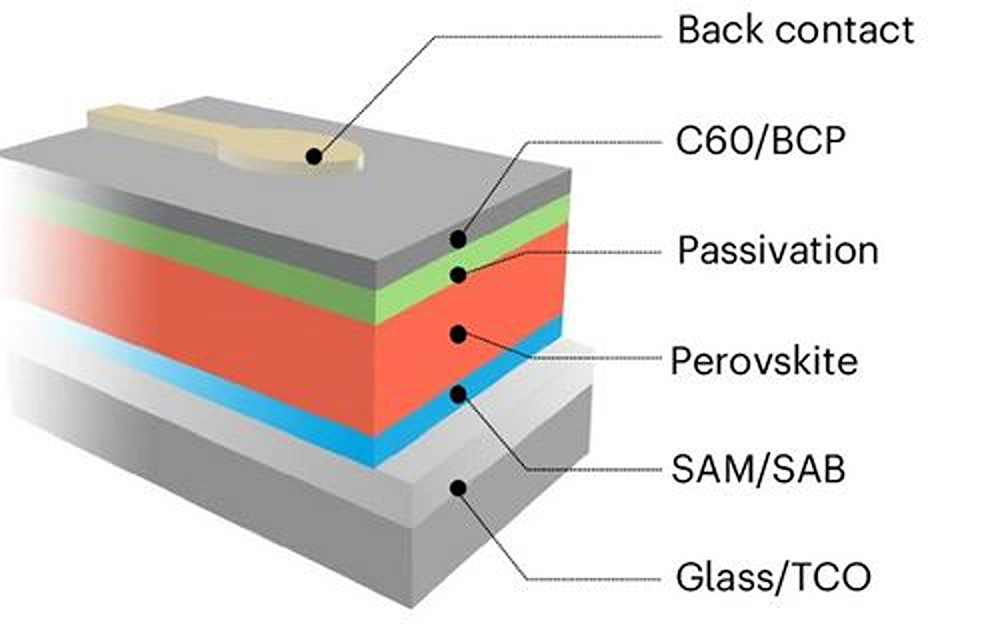The proposed bilayer is used as a hole contact material that provides improved adhesive contact with the perovskite film. It consists of a self-assembling monolayer of phosphonic acid with an upper layer made of an organic compound known as triphenylamine.
Scientists from Xi’an Jiaotong University have fabricated an inverted perovskite solar cell that uses a self-assembled bilayer (SAB) as a hole-selective molecular contact.
Inverted perovskite cells have a device structure known as “pin”, where hole-selective contact p is at the bottom of the intrinsic perovskite layer “i” with electron transport layer n at the top. Conventional halide perovskite cells have the same structure, but in reverse: a ‘nip’ arrangement. In a nip architecture, the solar cell is illuminated via the electron transport layer (ETL) side; in the pin structure, it is illuminated by the hole transport surface (HTL).
The proposed SAB consists of a self-assembling monolayer (SAM) of phosphonic acid with an upper layer made of an organic compound known as triphenylamine, which is intended to improve the adhesive contact with the perovskite film compared to a conventional SAM-perovskite interface. It also improves the thermal and mechanical robustness of the interface.
“SABs represent a basic form of self-assembled multilayers, consisting of separate monolayers with different constituents – interconnected via covalent or ionic bonds,” the researchers explained. “This layer-by-layer assembly stabilizes the labile monolayer by introducing rigid components and allows control over the termination of the film.”
The team built the cell with a substrate of glass and transparent conductive oxides (TCOs)the proposed double layer, the perovskite absorber, An ETL based on buckminsterfullerene (C60), a bathocuproin (BCP) buffer layer and a silver (Ag) metal contact.
The cell was tested under standard lighting conditions and found to achieve an energy conversion efficiency of 26.04%, an open-circuit voltage of 1.185 V and a short-circuit current density of 26.27 mA cm3.2and a fill factor of 83.84%. The cell was also able to maintain approximately 94% of its initial efficiency after 2000 hours of moist heat testing at 85°C.
“Notably, the best SAB device showed a relative efficiency loss of less than 4% over 2,000 hours, which is in line with the industry benchmark of a 5% loss over 1,000 hours for silicon photovoltaics,” the academics said, citing they noted that the result, which has been certified by the China National Accreditation Service, is among the most efficient inverted perovskite devices built to date.
The details of the cell technology can be found in the article “Self-assembled bilayer for perovskite solar cells with improved tolerance to thermal stresses”, published in nnatural energy.
This content is copyrighted and may not be reused. If you would like to collaborate with us and reuse some of our content, please contact: editors@pv-magazine.com.

